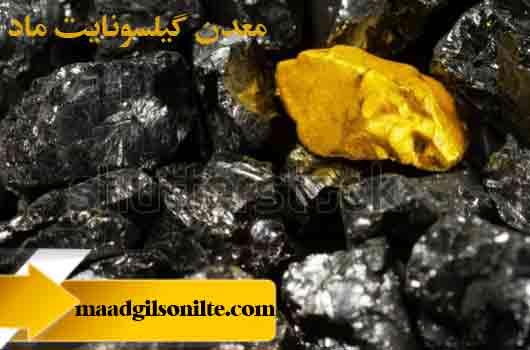
Coal, a fossil fuel formed from the remains of plants and vegetation over millions of years, has played an important role in global energy production for centuries. Its abundance, affordability and high energy content have made it a vital source of electricity and power generation for industries worldwide.
In addition to its direct use, Black carbon also acts as a raw material for various chemical processes, which leads to the production of a wide range of coal mineral chemicals. These chemicals are used in various sectors such as pharmaceuticals, plastics, fertilizers, etc. This article provides an overview of coal, examines the different types of carbonaceous rock and their properties, discusses the mining and mineral processing of Carbonaceous rock, and discusses the various chemicals of this useful carbonaceous rock and their uses.
Coal, that stubborn black rock, has kept the world warm and powered for centuries. It is a fossil fuel formed from the remains of plants that lived and died millions of years ago. Through a process called coalification, these ancient plants turned into the carbon-rich material we know as the mineral coal.
Coal consists of the transformed products of plant remains in the Carboniferous period. First, plant residues are placed in the swamp and covered by stagnant water. The contact of very small particles from the air with plant residues leads to the formation of a black mass called humus. In the humus layer, air contact with the decayed mass of the lower layers is prevented and the next process of Black carbon formation begins.
Under conditions of high pressure and temperature without access to air, peat Carbonaceous rock slowly turns into lignite Carbonaceous rock, then bituminous , and then into anthracite . The mineral formation of coal is clearly visible in mines that have not passed much of its life, and its shape and properties are similar to the plants that can be seen on the lands around the mines.
Coal is not only a source of energy. It also contains a treasure of chemicals that can be extracted and used in various industries. These chemicals, known as carbonaceous rock chemicals, are obtained from the various mineral components of Carbonaceous rock through a process called Black carbon processing or coal conversion.
The abundance and versatility of Black carbon chemicals make them valuable commodities. From coal tar to Carbonaceous rock gas, these coal byproducts are used in everything from medicine to manufacturing.
Anthracite, the cream of coal mineral, is the highest grade of Carbonaceous rock. With high carbon content and low moisture and volatile matter, anthracite burns hot and clean. It is valued for its efficiency and is commonly used in residential heating and as a reducing agent in metal smelting.
Bituminous coal, the middle child of the coal family, is the most abundant and widely used type of Black carbon. This material is known for its energy content, versatility and relatively low sulfur content compared to other types of Black carbon. Bituminous coal is of interest in power generation, steel production, and as a fuel source for industrial processes.
Coal under bitumen is the less mature brother of carbonaceous rock. It has lower energy content and higher moisture content, which makes it less energetic. However, bituminous remains an important fuel source for power plants due to its low sulfur content and abundance.
Brown coal, which is often called brown Carbonaceous rock, is the youngest and least developed type of Carbonaceous rock. It has low carbon content and high moisture content, which makes it less efficient for energy production. Lignite ore is mainly used in power plants close to mining sites, where it is readily available.
Each type of Black carbon has its own unique properties that determine its suitability for different applications.
The table below provides a quick comparison of the four main types of coal:
Underground mining is like a Black carbon themed version where miners look for Carbonaceous rock below the surface of the earth. They use tunnels and shafts to access Carbonaceous rock seams, then extract it using various methods such as room and column mining or long mining. Underground mining ensures the preservation of surface land, but it can be challenging and dangerous.
Surface mining is like Carbonaceous rock mining’s version of open-heart surgery, where miners remove topsoil and overburden to reveal Black carbon seams. This method is suitable for Black carbon deposits close to the surface and is less labor intensive than underground mining. However, it can have a significant impact on the environment and requires land reclamation.
After mining, the carbonaceous rock is subjected to a little spa treatment. Washing and preparation of Black carbon includes processes such as crushing, screening and washing to remove impurities and improve its quality. This treatment helps to reduce the sulfur and ash content and makes the coal mineral more desirable for certain applications.
Coal tar, the dark, sticky cousin of coal chemicals, is obtained from the destructive distillation of Black carbon. It finds a home in a variety of products, including roofing materials, sidewalk sealants, and even dandruff shampoos. So, the next time you use a Black carbon tar based shampoo, remember that your hair owes its deliciousness to Black carbon.
Coal gas, not to be confused with the aftermath of eating a plate of beans, is a flammable gas produced by heating Black carbon gas in the absence of air. It has historically been used for lighting and heating, but has largely been replaced by cleaner natural gas. However, coal gas is still used as a raw material in the production of chemicals.
Coal liquefaction is the alchemical process of converting Carbonaceous rock into liquid hydrocarbon fuel. Through various methods such as direct coal liquefaction or indirect Carbonaceous rock liquefaction, coal mineral can be converted into liquid fuels such as diesel or jet fuel. This process offers an alternative to petroleum-based fuels and reduces dependence on crude oil.
When carbonaceous rock is exposed to oxygen and burns, it produces various combustion products. These Black carbon combustion products or CCPs can be used in a wide range of applications such as cement production, building materials and even in environmental remediation.
It is actually a solid carbon material that is produced from the Carbonaceous rock. During the production process, Black carbon ore is heated in an oxygen-free environment, which removes volatile components and leaves behind a carbon-rich substance called coke. Then this coke is used in various industries including steelmaking and electricity production.
Ammonia and urea are two chemicals that don’t usually come up in everyday conversation, but they play a huge role in the agricultural industry. Production of ammonia and urea starts with Black carbon. The Carbonaceous rock is gasified to produce a mixture of carbon monoxide and hydrogen, which then reacts with the nitrogen in the air to form ammonia. Ammonia is later converted to urea, a common nitrogen fertilizer.
Benzene and toluene may sound like strange artist names, but they are actually important chemical compounds derived from the Carbonaceous rock. These aromatic hydrocarbons are produced through processes such as Carbonaceous rock mineralization and coal gasification. Benzene and toluene are used in various industries, including the production of plastics, synthetic fibers, and solvents.
Synthetic natural gas, also known as SNG or carbonaceous rock gas, is another important Carbonaceous rock chemical. It is produced by methanation, a process in which carbon monoxide and hydrogen from syngas react to form methane. SNG can be used as an alternative to natural gas in heating and power generation, reducing dependence on fossil fuels and reducing greenhouse gas emissions.
Ash is the remaining carbonaceous rock after burning the Carbonaceous rock. Rather than being treated as waste, Carbonaceous rock mine ash can be used in many beneficial ways. It can be used in cement production, as a filler in concrete, road construction and even in agriculture as a soil conditioner. By finding practical uses for coal ash, we can minimize waste and promote sustainability.
While coal ore and carbonaceous chemicals have played an important role in powering our world and supporting various industries, it is important to acknowledge their environmental impacts. Extraction, production and use of carbonaceous rock can contribute to air and water pollution, greenhouse gas emissions and land degradation. As we look to a more sustainable future, it is critical to invest in cleaner energy alternatives and promote responsible practices in the coal industry.
As a result, Carbonaceous rock and coal chemicals have played an important role in the energy sector, providing reliable and affordable energy for various industries and power generation. While coal mining has faced environmental concerns due to carbon emissions and other pollutants, advances in clean coal mining technology offer potential solutions.
However, as the world moves toward renewable energy sources to mitigate climate change, the future of coal and Carbonaceous rock chemicals remains uncertain. Balancing energy needs with environmental sustainability and exploring alternative energy options is essential. As we examine the challenges ahead, understanding the complexities of coal mineralization and coal mineral chemistry will be essential to shaping the future energy landscape.
Answer: Coal is a fossil fuel that is formed from plant sediments in the Carboniferous period.
Coal chemicals refer to various chemical compounds that are obtained from carbonaceous rock through processes such as gasification, liquefaction, and distillation. These chemicals are used in various industries such as pharmaceuticals, fertilizers, plastics, etc.
Answer: Coal is used to produce electricity, heating and car fuel.

